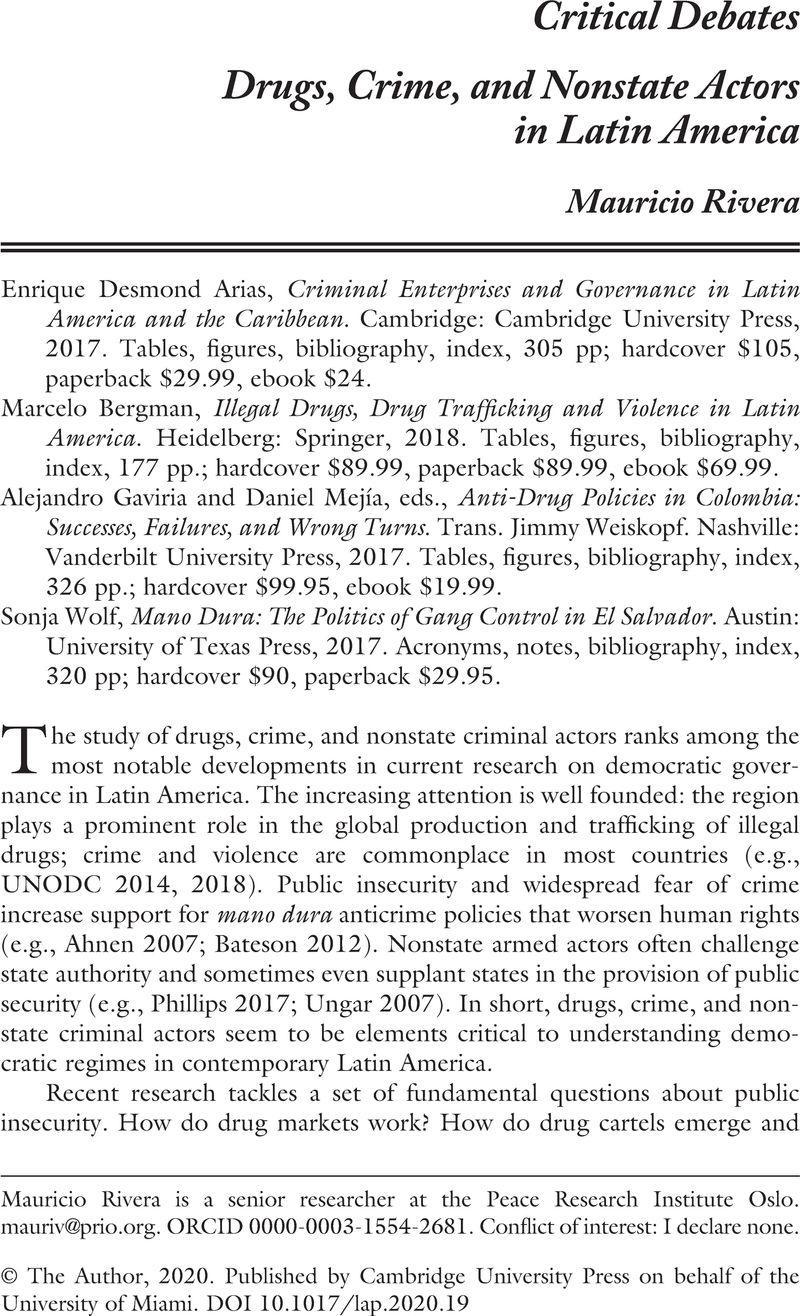Crossref Citations
This article has been cited by the following publications. This list is generated based on data provided by Crossref.
Román-Acosta, Daniel
and
Fernández-Delgado, Jhan Carlos Manuel
2024.
Resistencia y respuestas de la sociedad civil al narcotráfico y su influencia en la política.
Perspectivas en Inteligencia,
Vol. 16,
Issue. 25,
p.
87.



